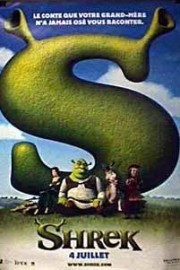Shrek
It’s been a long time since I last watched Dreamworks’s “Shrek,” although in some ways, it feels like anybody watching a Dreamworks film since “Shrek” has been watching the same movie ever since. That’s not just because of the three sequels to their 2001 film, either, because the combination of pop culture references, star voices and common themes is prevalent in everything from the “Madagascar” movies to “Over the Hedge” to “Kung Fu Panda” and “Monsters & Aliens,” among many others. But “Shrek” was the original, and remains the best– the film’s subversive wit and the way it riffs on the traditional Disney fairy tale mold is still fresh and funny, with characters whose personal journeys we become engaged in and can watch over and over. The sequels never quite recaptured that magic.
“Shrek” was based on the book by William Steig, but the screenplay by Ted Elliott, Terry Rossio, Joe Stillman and Roger S.H. Schulman is as much based on ideas from the mind of Jeffrey Katzenberg, the head of Dreamworks Animation, who helped usher Disney through it’s renaissance in the late ’80s/early ’90s, but left on not-so-great terms after “The Lion King.” Katzenberg then joined Steven Spielberg and David Geffen to create Dreamworks SKG and head the animation division. They released four films prior to “Shrek” (one of which was the Aardman-produced hit, “Chicken Run”), but “Shrek” was the breakthrough that came to define the studio, and it won the first-ever Oscar for Best Animated Feature. The film tells the story of an ogre (Shrek, voiced by Mike Myers) who just wants to live on his own in his swamp when it becomes overrun by fairy tale characters. When he goes to complain to the local Lord Farquaad (John Lithgow), he is confronted by a castle not unlike Disney World, with lines and turnstyles and obnoxious attractions that some visitors (namely, Eddie Murphy’s Donkey) may like, but Shrek finds insufferable. While there, Shrek is roped into rescuing Princess Fiona (Cameron Diaz) from her isolated castle, and the firebreathing dragon that guards it. Needless to say, that doesn’t go quite as planned.
At the time, there was quite a bit that felt practically revolutionary about “Shrek,” starting especially with the character animation. CG animated humans were still being perfected by feature animation studios, and the work done by PDI on “Shrek” was a step above anything that had been done before by Pixar, although it didn’t take long for that studio to catch up. Watching it now, the state of the art has only improved over the years, but the film still plays spectacularly well. The movements aren’t as fluid as we may prefer, but the character animation is exemplary in it’s detail, breathing life into these characters beyond the superb voice acting in the cast. Myers’s Scottish burr, previously on display as Fat Bastard in the second “Austin Powers” film and “So I Married An Axe Murderer,” never found a more comfortable home than it did in the misunderstood ogre of Shrek, who tells Donkey that “ogres are like onions…they have layers.” They’re also both smelly, but we see how true the layers thing is when he and Donkey are on the road with Fiona, trying to get her back to Farquaad (whom Lithgow is wickedly funny as), and Myers plays it perfectly. It helps that he has some pretty great chemistry, as well, with Diaz (in one of her best performances) and Murphy, in one of his last great performances as Donkey. Myers and Murphy are simply balls-out hysterical, but also provide enough weight to really sustain the film emotionally before Diaz’s Fiona reveals a secret that takes the film to another level.
In the end, though, the film has a depth few other Dreamworks movies have, but it’s the humor that really stands out. Gags with Pinocchio and a a Gingerbread Cookie under duress are hilarious, and that Magic Mirror ends up seeing some unsightly things when Farquaad gets his hands on it. The twist on fairy tale conventions, along with jabs at some of Disney’s most iconic characters and moments (who can forget the dwarfs putting Snow White on Shrek’s table, and the ogre saying, “Dead broad off the table!”), is why “Shrek” found an audience in 2001 (and managed to sustain it through three progressively more disappointing sequels), and why it reminded me of that initial impact watching it again this past week. Dreamworks has had some rough patches since “Shrek” came out, but I’m still a believer that they can find their voice again.










